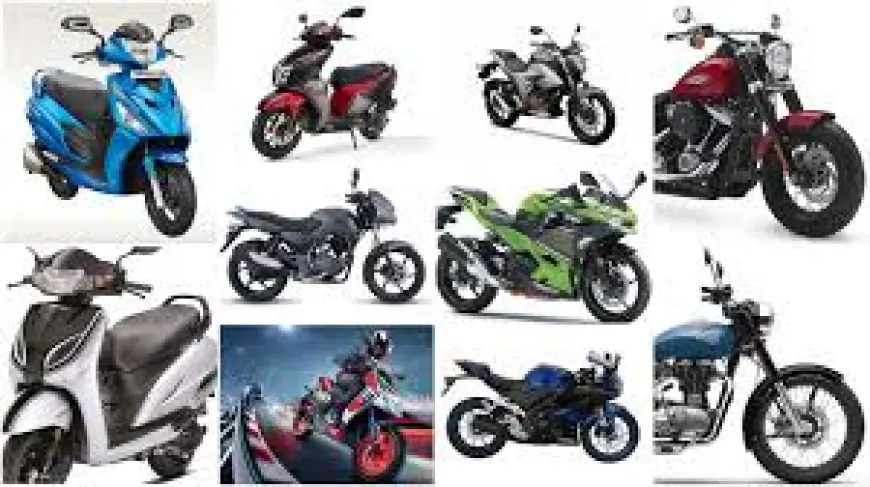Asia-Pacific Two-Wheeler Market 2030: Forecast & Dynamics
Rapid urbanization in Asia-Pacific has significantly increased the demand for two-wheelers. As cities grow more densely populated, traditional four-wheel vehicles.

Market Overview
The Asia-Pacific two-wheeler market stands as one of the largest and fastest-growing mobility ecosystems in the world. Valued at USD 70.23 billion in 2024, the market is projected to reach USD 119.55 billion by 2030, expanding at a CAGR of 9.27% during the forecast period. This remarkable growth is being shaped by a combination of economic, demographic, and technological factors that are redefining the region’s mobility landscape.
With cities becoming more crowded and transportation infrastructure struggling to keep pace with rising demand, two-wheelers have become an indispensable mode of mobility for millions of people. From urban centers in India, Vietnam, and Indonesia to rural areas in China and the Philippines, motorcycles, scooters, and mopeds are the go-to vehicles for their affordability, maneuverability, and efficiency.
Growing disposable incomes, a rising middle-class population, and the urgent demand for affordable, flexible transportation solutions are primary growth drivers. Additionally, the surge in electric two-wheelers (E2Ws) has added a new dimension to market expansion, accelerated by government incentives, advances in battery technology, and consumer awareness of sustainability.
The market, however, is not without its challenges. The high upfront cost of electric models, gaps in charging infrastructure, and policy uncertainties across different countries are key barriers. Nevertheless, the long-term outlook remains highly positive as Asia-Pacific economies invest heavily in urban mobility, sustainable transport solutions, and next-generation technologies.
Emerging Trends in the Asia-Pacific Two-Wheeler Market
1. Rise of Electric Two-Wheelers (E2Ws)
One of the most significant trends shaping the Asia-Pacific two-wheeler market is the transition from internal combustion engine (ICE) vehicles to electric mobility. Governments are implementing stricter emission norms and offering subsidies for electric vehicle (EV) purchases, making electric scooters and motorcycles more attractive to consumers. Battery-swapping stations, fast-charging networks, and improved lithium-ion technology are fueling adoption.
2. Integration of Smart & Connected Features
Digital dashboards, GPS navigation, Bluetooth connectivity, and telematics are becoming standard features in modern two-wheelers. Younger consumers in particular demand connected mobility solutions, and manufacturers are leveraging Internet of Things (IoT) integration to offer real-time diagnostics, ride data, and enhanced safety features.
3. Shared Mobility & Subscription Models
Urbanization has fueled demand for ride-hailing and shared two-wheeler services, particularly in megacities like Jakarta, Delhi, and Bangkok. Subscription-based ownership models are also gaining traction, providing consumers with cost-effective and flexible access to mobility without long-term financial commitments.
4. Lightweight and Urban-Friendly Designs
Scooters and mopeds are increasingly being designed for urban commutes. Compact, lightweight models with excellent fuel efficiency or battery range are in demand, catering to city dwellers who prioritize convenience and affordability.
5. Focus on Sustainability and Eco-Friendly Solutions
With rising environmental concerns, manufacturers are investing in recyclable components, green materials, and zero-emission technologies. This shift is supported by government mandates for cleaner urban transport, especially in China, India, and Japan.
Download Free Sample Report: https://www.techsciresearch.com/sample-report.aspx?cid=14243
Market Drivers
1. Urbanization and Population Growth
Asia-Pacific is home to some of the world’s most densely populated urban regions. With urban traffic congestion worsening, two-wheelers provide a faster and more reliable commuting option compared to cars or public transportation.
2. Affordability and Rising Middle Class
Two-wheelers are significantly more affordable than four-wheelers, both in purchase price and maintenance costs. Rising disposable incomes across India, Indonesia, Vietnam, and the Philippines are making motorcycles and scooters more accessible to the middle class.
3. Government Regulations and Incentives
Stricter emission regulations and financial incentives for EV adoption are compelling manufacturers to develop cleaner technologies. Subsidies for electric scooters and tax exemptions on EV purchases are accelerating adoption.
4. Technological Innovation in Batteries
Advances in lithium-ion batteries, fast-charging technology, and energy efficiency are driving the expansion of electric two-wheelers. With improved range and reduced charging times, E2Ws are becoming a mainstream choice.
5. Growth of Delivery & E-Commerce Services
The boom in e-commerce and food delivery platforms is increasing the demand for motorcycles and scooters, particularly in urban hubs. Fleet operators are also shifting toward electric models for cost savings and sustainability compliance.
Market Segmentation
By Vehicle Type
- Motorcycles: Preferred for versatility, speed, and long-distance commuting. Widely used for delivery services and personal mobility.
- Scooters: Dominating urban centers due to compact design, fuel efficiency, and ease of use. Increasingly popular among youth and women.
- Mopeds: Economical, low-speed vehicles ideal for rural and semi-urban mobility. Popular among budget-conscious consumers.
By Propulsion Type
- ICE Two-Wheelers: Continue to dominate rural and less urbanized regions due to affordability and established fuel infrastructure.
- Battery Electric Vehicles (BEVs): Rapidly gaining popularity in urban centers, supported by incentives and expanding charging networks.
By Country
- Indonesia: Fastest-growing market, driven by population growth, rising incomes, and demand for affordable transport.
- India: One of the largest two-wheeler markets globally, fueled by urban congestion and a growing middle class.
- China: Leading in electric two-wheeler adoption due to strong government support and infrastructure.
- Japan & South Korea: Advanced markets with a focus on innovation, premium motorcycles, and connected mobility.
Industry Key Highlights
- Market valued at USD 70.23 billion in 2024, projected to reach USD 119.55 billion by 2030.
- 9.27% CAGR during the forecast period, driven by urbanization and rising disposable incomes.
- Strong government support for electric two-wheelers, including subsidies and tax incentives.
- Motorcycles dominate rural and long-distance use; scooters lead in urban commuting.
- Shared mobility, last-mile delivery, and digital instrument clusters are fueling demand.
- Indonesia, India, and China are the growth engines of the regional two-wheeler market.
Competitive Analysis
The Asia-Pacific two-wheeler market is highly competitive, with global giants and regional players vying for market share. Leading manufacturers focus on innovation, affordability, and expanding their electric two-wheeler portfolios.
Major Players:
- Honda Motor Co., Ltd. – Market leader with strong ICE and EV presence.
- Hero MotoCorp Ltd. – Dominates in India with a vast portfolio of motorcycles and scooters.
- Yadea Technology Group Co., Ltd. – A leading Chinese electric two-wheeler manufacturer.
- Yamaha Motor Co., Ltd. – Known for innovation and premium motorcycle offerings.
- TVS Motor Company – Expanding presence in electric scooters and affordable models.
- Bajaj Auto Ltd. – Strong in motorcycles, with growing EV initiatives.
- Suzuki Motor Corporation – Diversified offerings across motorcycles and scooters.
- Jiangmen Dachangjiang Group Co., Ltd. – One of China’s largest motorcycle producers.
- Kawasaki Motors, Ltd. – Focus on premium motorcycles.
- Zhejiang CFMOTO Power Co., Ltd. – Rising player with expanding EV portfolio.
The competition is increasingly shifting toward EV leadership, where Chinese and Indian firms are intensifying their R&D efforts. Strategic collaborations, joint ventures, and technology-sharing agreements are shaping the competitive landscape.
Future Outlook
The Asia-Pacific two-wheeler market is on the cusp of a major transformation. While ICE vehicles will continue to dominate rural areas in the near term, electric two-wheelers are expected to capture significant market share in urban centers by 2030.
Key factors shaping the future:
- Expansion of EV infrastructure across Asia-Pacific.
- Technological breakthroughs in battery capacity and charging times.
- Growth of ride-sharing and last-mile mobility solutions.
- Strong policy frameworks driving green mobility adoption.
By 2030, the two-wheeler market will likely represent a balanced mix of ICE and electric models, with urban consumers leading the shift toward sustainable mobility.
10 Benefits of the Research Report
- Provides reliable market size and growth forecasts up to 2030.
- Analyzes emerging trends shaping the two-wheeler industry.
- Offers insights into country-wise opportunities across Asia-Pacific.
- Evaluates consumer behavior and adoption patterns.
- Identifies key drivers and challenges impacting market growth.
- Profiles leading players and their strategic developments.
- Assesses technological advancements in electric mobility.
- Highlights the role of government policies and incentives.
- Helps stakeholders identify investment and partnership opportunities.
- Supports informed decision-making for manufacturers, investors, and policymakers.
Conclusion
The Asia-Pacific two-wheeler market is a dynamic and evolving industry, characterized by rapid growth, intense competition, and a transformative shift toward sustainable mobility. While traditional motorcycles and scooters continue to dominate, the rise of electric two-wheelers, connected technologies, and shared mobility solutions is reshaping the future of transportation in the region.
With strong economic fundamentals, a rising middle class, and supportive government policies, the Asia-Pacific two-wheeler market is poised to remain a global leader in personal and commercial mobility solutions through 2030 and beyond.
Contact Us-
Mr. Ken Mathews
708 Third Avenue,
Manhattan, NY,
New York – 10017
Tel: +1-646-360-1656
Email: [email protected]
Website: www.techsciresearch.com
What's Your Reaction?
 Like
0
Like
0
 Dislike
0
Dislike
0
 Love
0
Love
0
 Funny
0
Funny
0
 Angry
0
Angry
0
 Sad
0
Sad
0
 Wow
0
Wow
0



















































